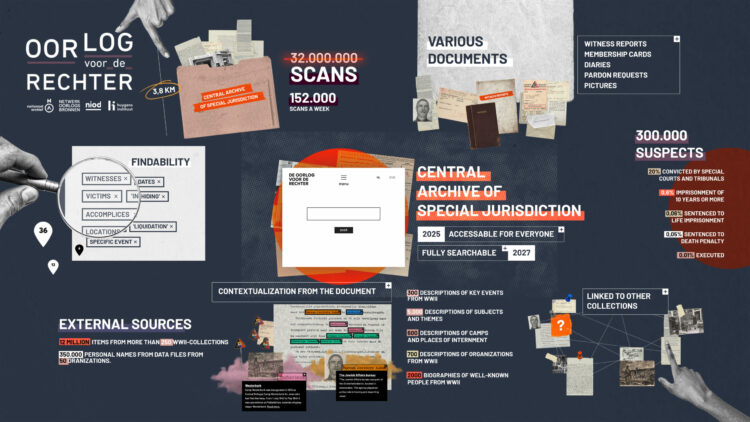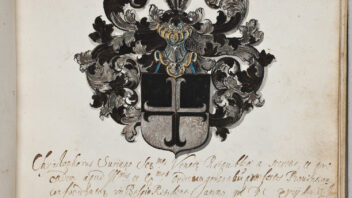Netherlands’ largest war archive searchable online from 2025
Amsterdam / The Hague – The Netherlands’ largest war archive will become digitally accessible to a wide audience. With this ambitious goal, the project Oorlog voor de Rechter starts on 16 February 2023. Four organisations are joining forces to digitise the Central Archive on Special Jurisdiction (CABR) and make the digitised archive documents readable and searchable by means of artificial intelligence. From 2025, the CABR will be open to the public and the first files will be available via Oorlogvoorderechter.nl. This takes into account the GDPR privacy rules, which means that not all documents may yet be made available online.
The CABR is the most consulted and the largest archive on the Second World War in the Netherlands. Every year, thousands of people come to see files from the CABR at the Nationaal Archief. This archive contains files of some 300,000 people who were suspected of collaborating with the Germans. It covers a total of nearly four kilometres. Files may include witness accounts, NSB membership cards, diaries, pardon requests and sometimes photographs. About a large proportion of the suspects, suspicions proved unfounded. Twenty percent were eventually convicted by a special court or tribunal, and nearly 1.900 of them received prison sentences of 10 years or more in the process.

Joint project
Oorlog voor de Rechter is a joint project of the National Archive, Netwerk Oorlogsbronnen, the Huygens Institute and NIOD Institute for War, Holocaust and Genocide Studies. Archive records from CABR will be digitised with an expected average production of 152,000 scans per week. Artificial intelligence will then be used to make everything digitally readable and searchable. To better understand the documents from the CABR and place them within a broader context, they are enriched with background information. References are also made to sources dealing with the same topic from collections other than CABR.
The first digital results will be presented on Oorlogvoorderechter.nl from 2025. During the project, involved parties will enter into discussions with interest groups on the handling of personal data. The project will run until 2027. The ability to search right through the CABR will provide new insights into events in the Second World War, in all its diversity and from different perspectives.
Ministries
Funding for Oorlog voor de Rechter is virtually complete. For now, the project is funded from three ministries. The Ministry of Education, Culture and Science, responsible for the Nationaal Archief, which houses the Central Archive on Special Jurisdiction. The Ministry of Health, Welfare and Sport, responsible for care for war victims and the memory of the Second World War. And the Ministry of Justice and Security, the original creator of the Central Archive of Special Jurisdiction.




